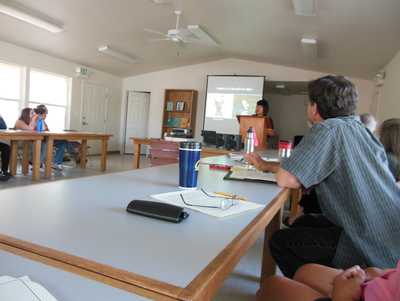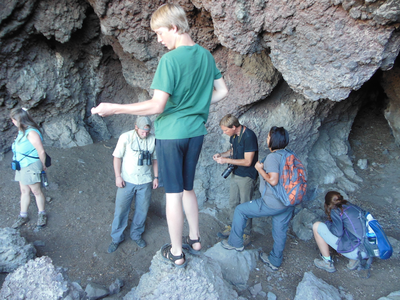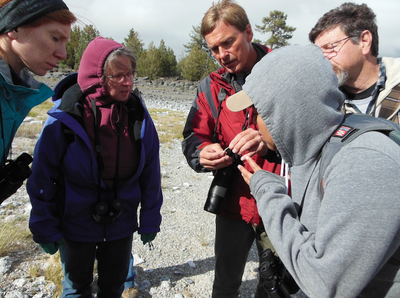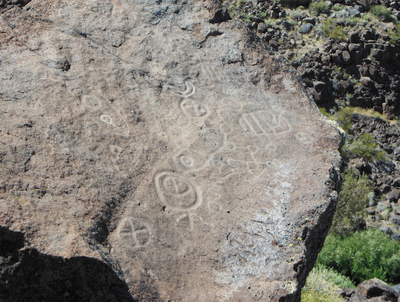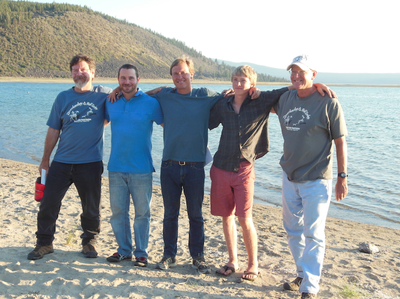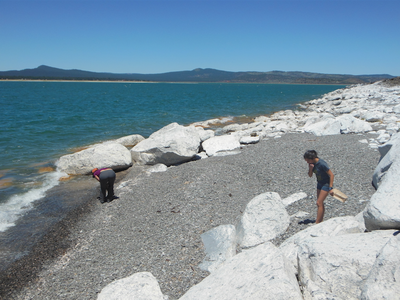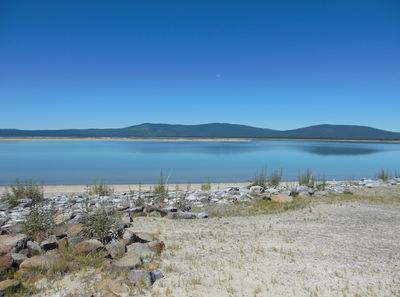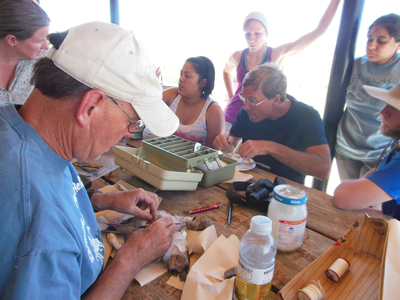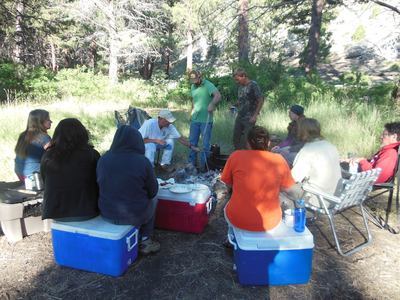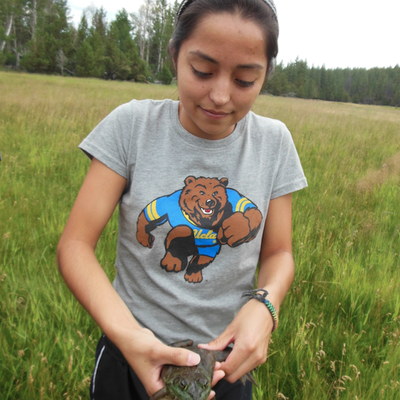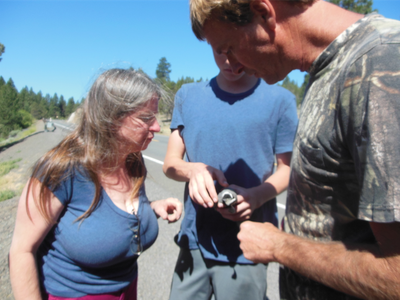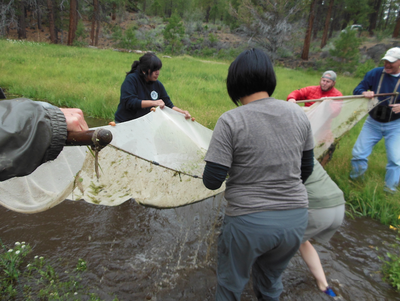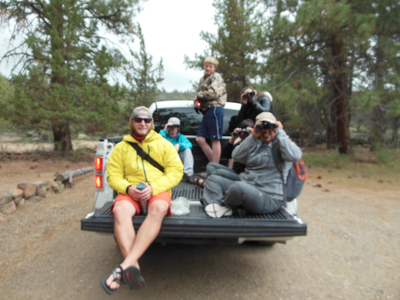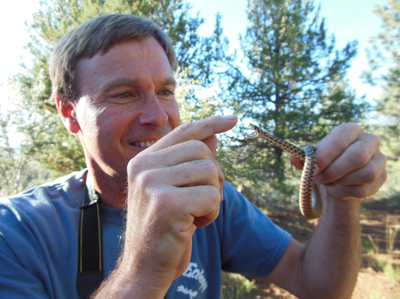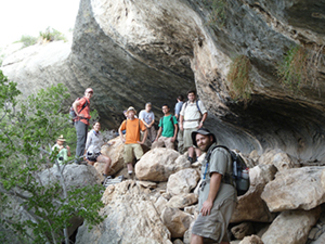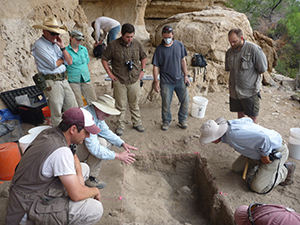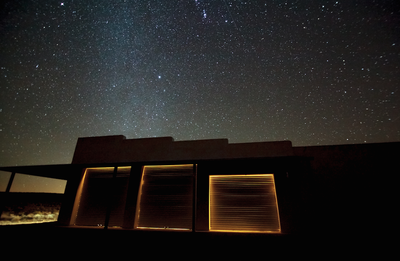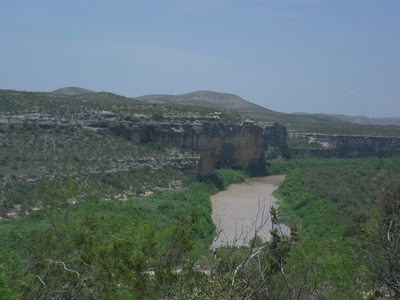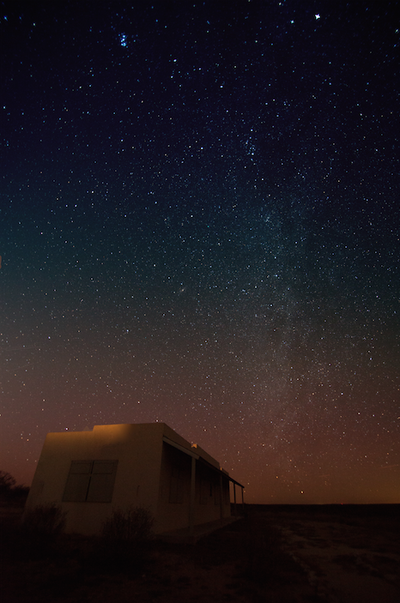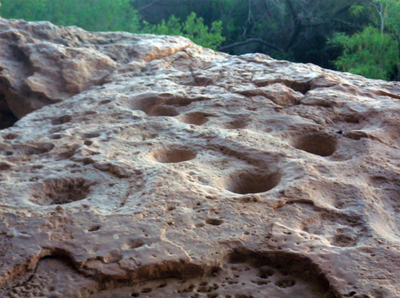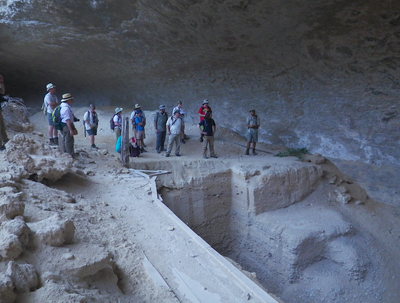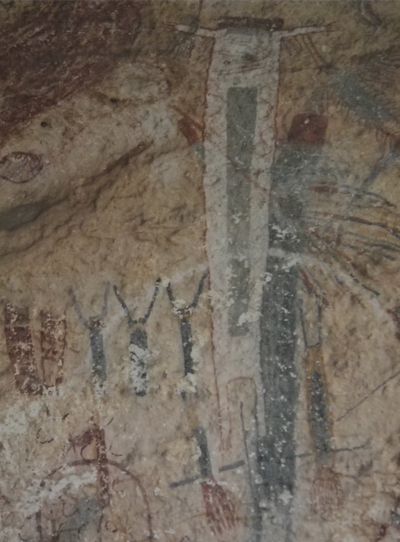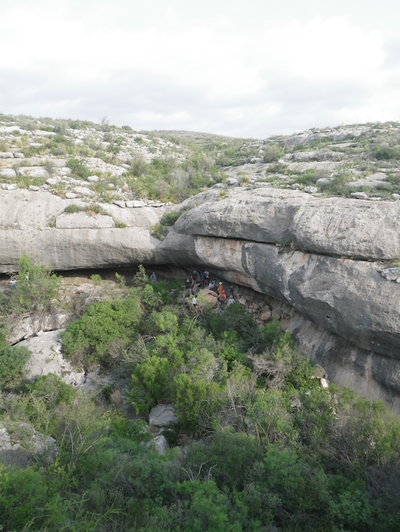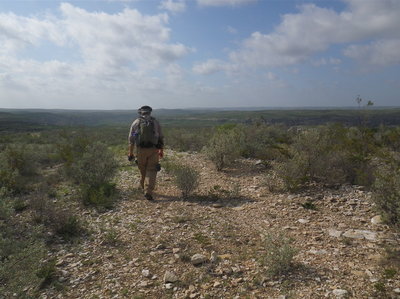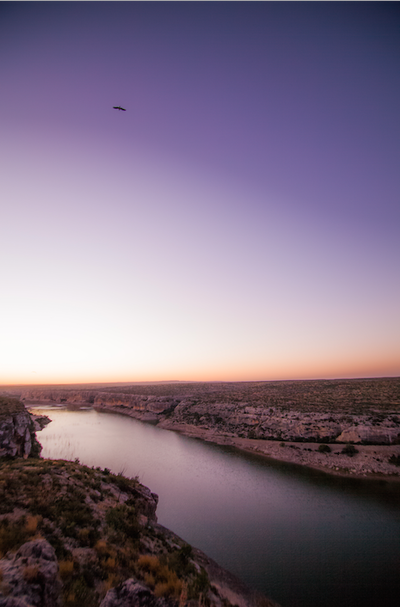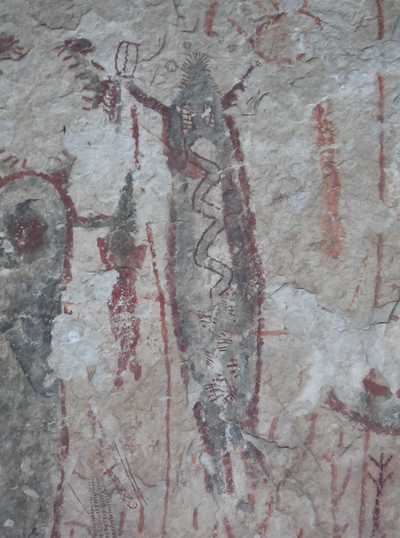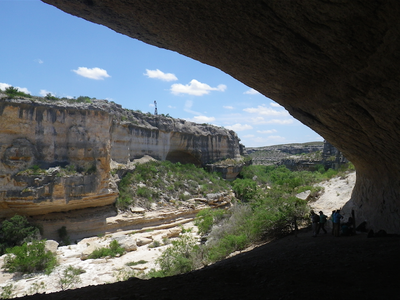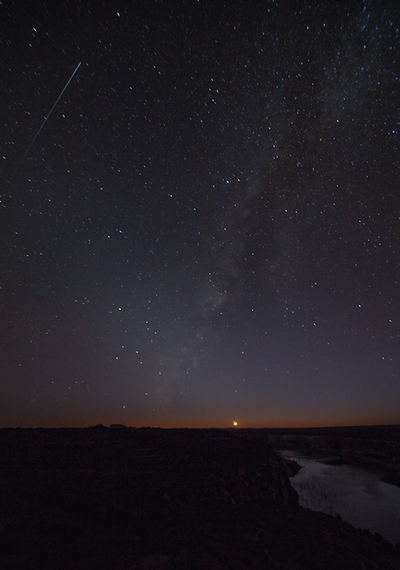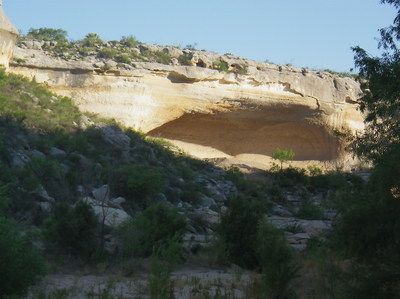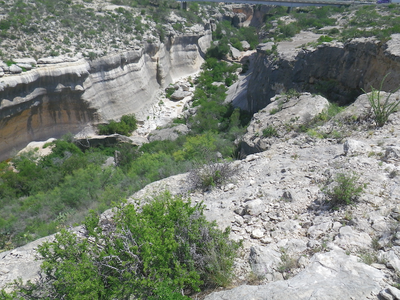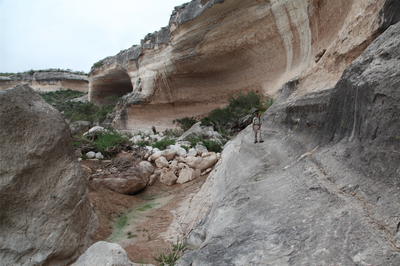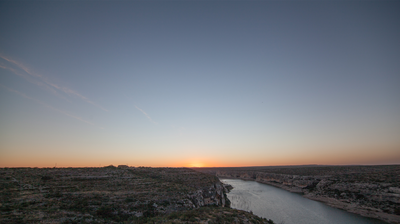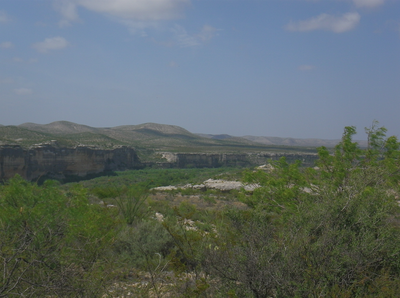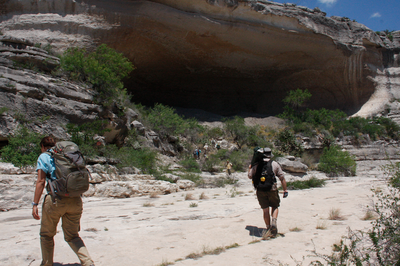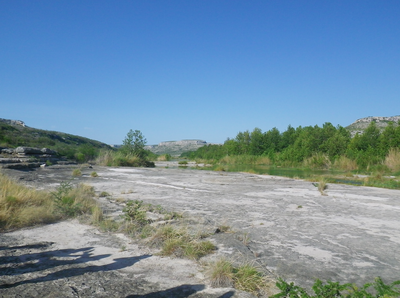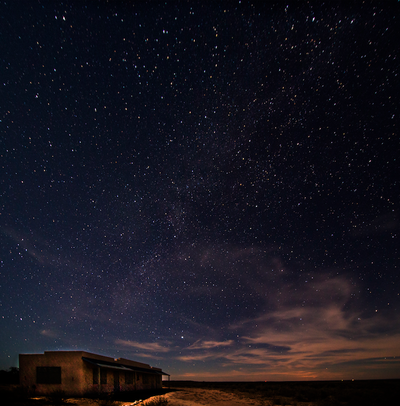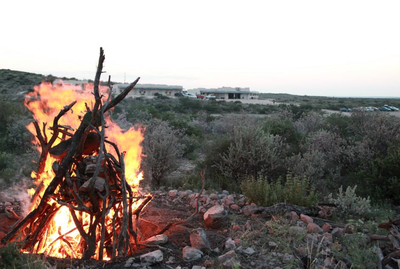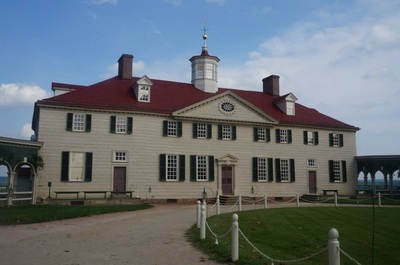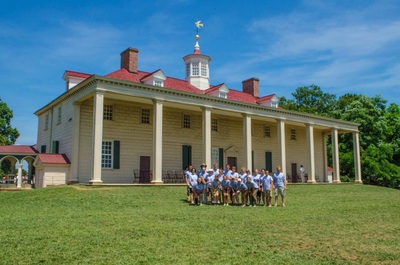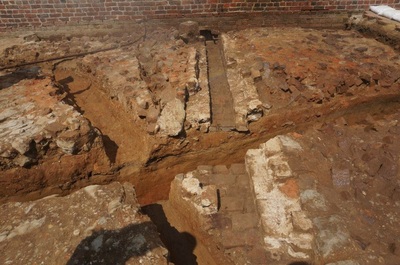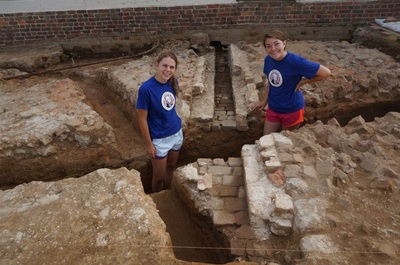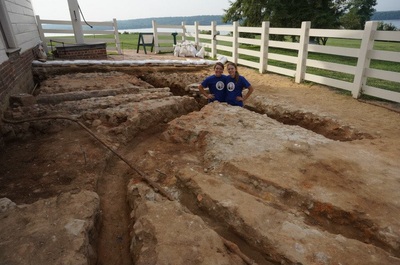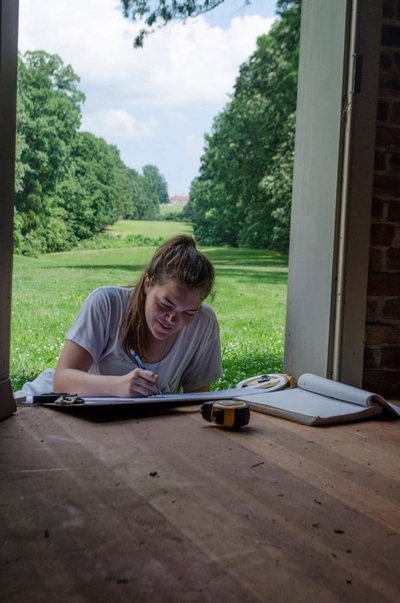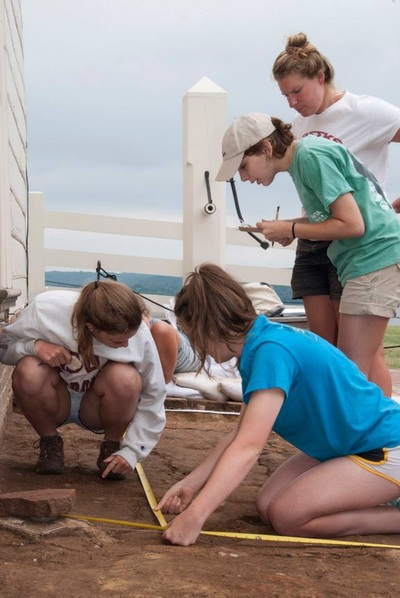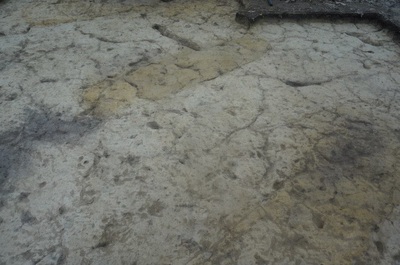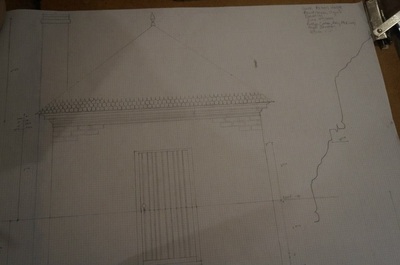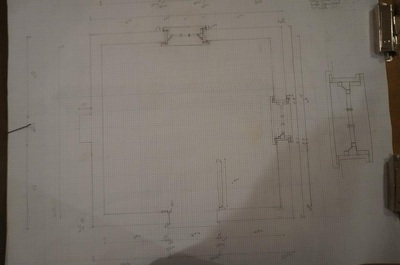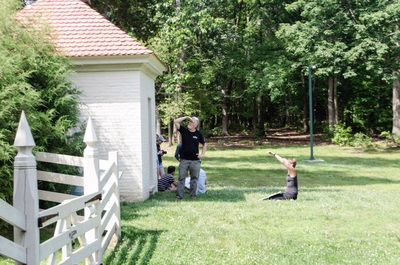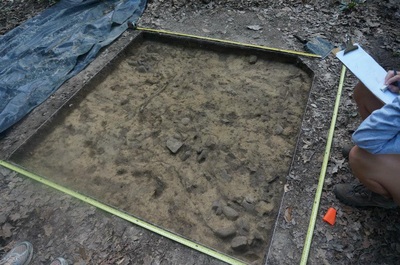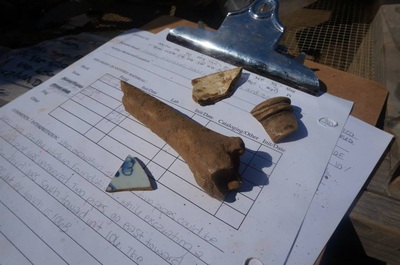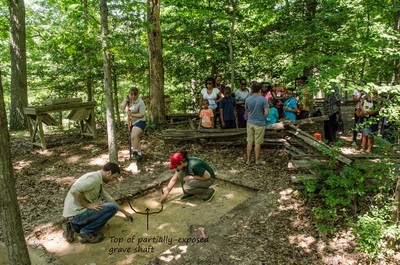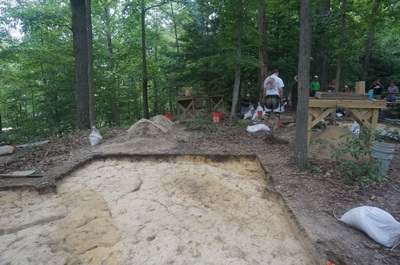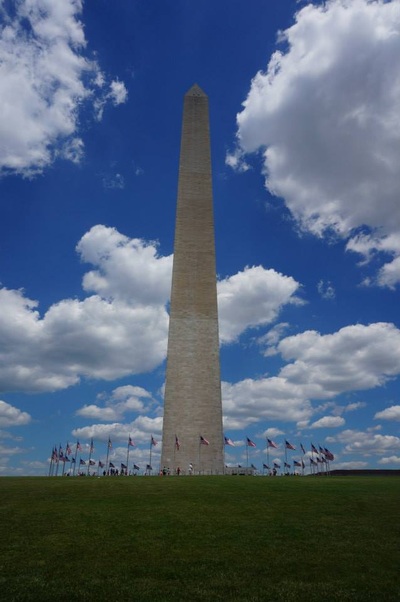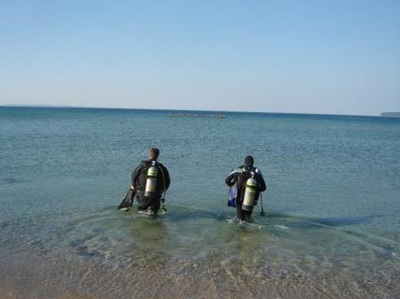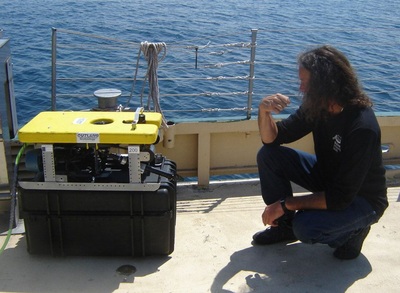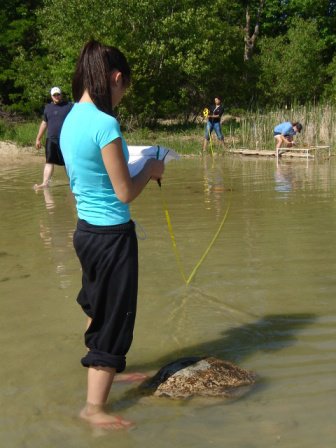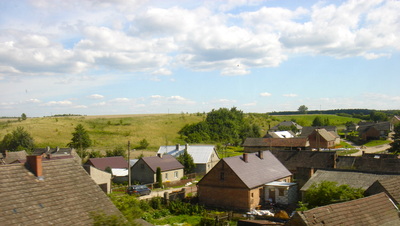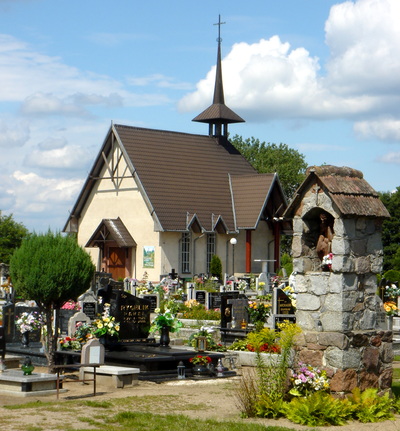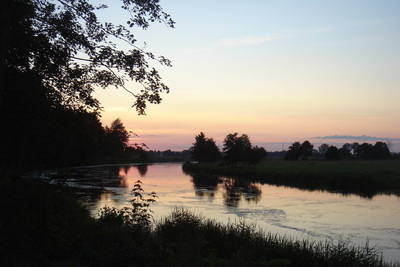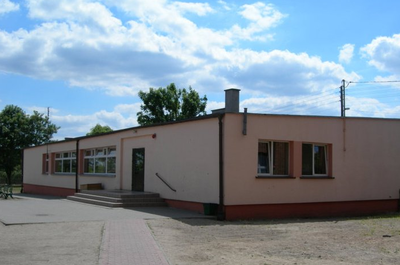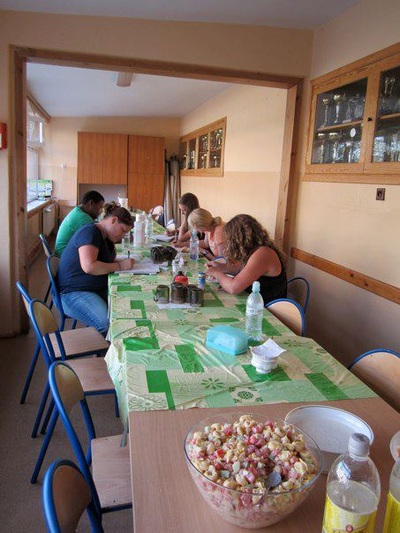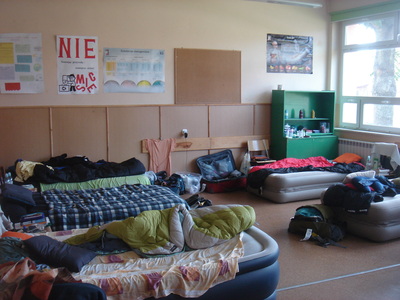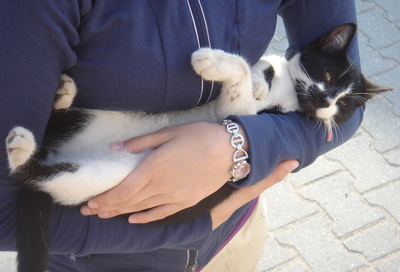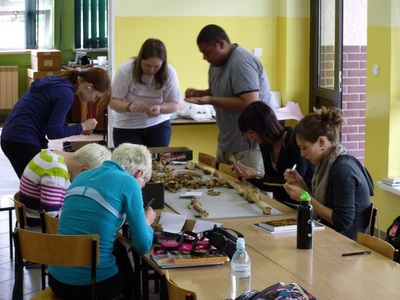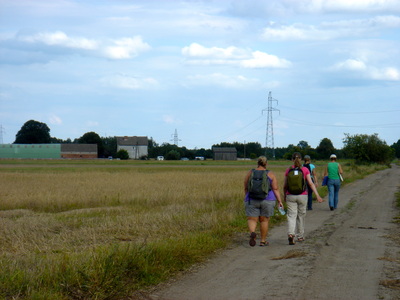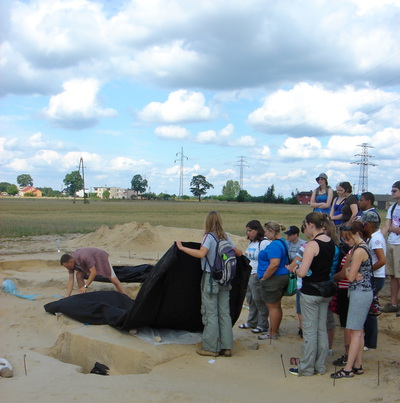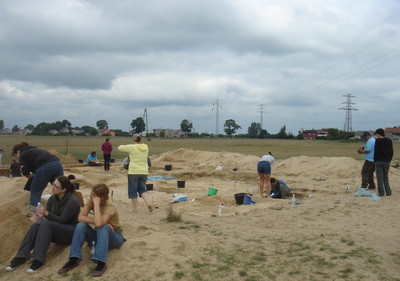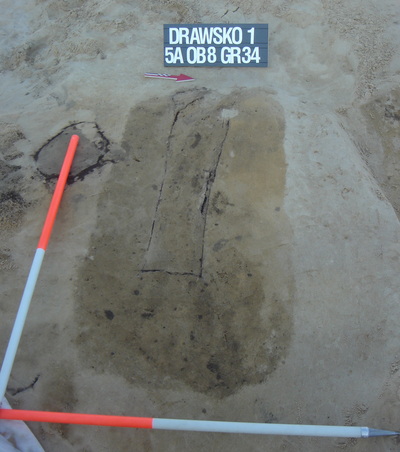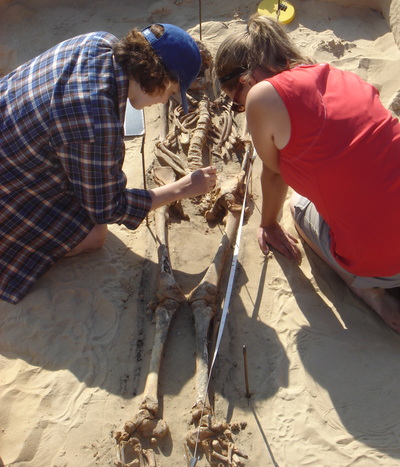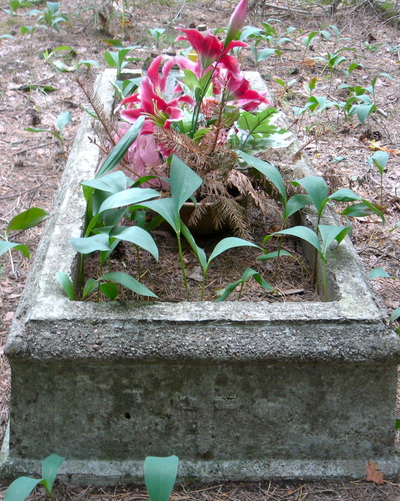* This review was written by Allison. Allison says, " I attended this field school in the summer of 2013. At the time I was going into my senior year at UC Berkeley. I double majored in Anthropology and Integrative Biology. I knew I wanted to specialize in zooarchaeology, so I took this field school in order to learn more about it and develop my skills. I also knew I wanted to go to graduate school, but after taking this field school I decided to apply to the University of Utah in order to work with Dr. Broughton. So I applied and was accepted, and even received a research assistantship under Dr. Broughton. I'm finishing up my first year of grad school, and I want to specialize in applied zooarchaeology. I plan on staying at the U of U to earn my doctorate, and then work for Fish and Wildlife as a consultant for wildlife conservation and management." Thanks, Allison!
FIELD SCHOOL & WEBSITE: University of Utah's Field Course in Zooarchaeology and Field Ecology
LOCATION: Eagle Lake, California
AFFILIATIONS: University of Utah
LENGTH & DATES: June 20 – July 12, 2015
HISTORY: This field school has been taught by the same instructors since 1988.
CURRENT PROJECT: Students spend the first half of the field school attending lectures and labs and
other hands-on learning experiences, and then the second half conducting their own research
project either with zooarchaeological assemblages the instructors bring to the field station, or with
materials collected around Eagle Lake.
STAFF: The field school is led by Dr. Jack Broughton (Professor of Anthropology) from the University of
Utah, Dr. Frank Bayham (Professor of Anthropology) from California State University Chico,
Raymond J. Boggiatto (lecturer in the Biology Department) from CSU Chico, and Kevin Dalton
(lecturer in the Anthropology Department) from CSU Chico.
COST: The program costs includes tuition ($1,991.88) and a special fee to cover room and board and field trips ($2,399.00). Financial assistance may be available through the office of Financial Aid and Scholarships at the University of Utah.
DEADLINES: Application deadline is listed as “as soon as possible” and tuition and fees are due in early June 2015.
CREDITS: 6 hours of undergraduate credit are available from University of Utah
APPLICATION PROCESS: A simple application and proof of insurance
Tell us about your field school experience.
This field school was honestly the best thing I did during my undergraduate career. The group was small (they limit it to 10 students), so everyone was able to get a lot of one-on-one attention from the instructors who are at the top of their respective fields. We also were able to become a close-knit group and the faculty got to know us all really well. (Which is how I decided to attend University of Utah for graduate school to work with Dr. Broughton!)
The first half of the field school is sort of the learning phase. A typical day consists of breakfast, lectures, lunch, lab, and then some sort of outing or field trip. Lectures focus on the zooarchaeology and ecology of western North American fauna, and topics range from zooarchaeological methods, to the basics of behavioral ecology, to specific case studies. Lab sessions are more independent, hands-on learning with the skeletal comparative collections that they bring in from the U of U and CSU Chico museums. And field trips include (but are certainly not limited to) seining for fish at a nearby stream, catching snakes and bullfrogs in a marshy meadow, and hikes around the area to become familiar with the ecology and do field identifications of any plants, bones, or wildlife we come across. Then at the end of the first and the second week, we are tested on what we learned that week—but it’s not too bad!
Then as a reward for all of the hard work during the first two weeks, the class goes on a 4-night camping trip. This trip involves visiting famous archaeological sites in northeastern California, southern Oregon, and Nevada—including Paisley Caves (the oldest securely dated site in North America) and Fort Rock Cave. Along the way, the two-car caravan often stops for road kill (to make into comparative skeletons or study skins!), wildlife sightings, and road trip snacks. There are also plenty of campfires, night drives to catch kangaroo rats, and many more shenanigans.
Upon returning to the field station, students then get started on their independent research projects. They get the choice of working with an actual zooarchaeological assemblage from a site in western North America or collecting data from somewhere around Eagle Lake. Students get experience writing a research proposal and a scientific paper. Then at the end of the field school, students present their project at the Stanley J. Olsen Zooarchaeology Conference. Graduate students, faculty, and CRM professionals from all over western North America attend this conference and thus provide valuable networking opportunities.
What skills did you learn?
This field school gave me a strong foundation of zooarchaeological and ecological skills and knowledge. We learned how to identify fragmentary vertebrate remains both in the lab and in the field, with a focus on the animals of western North America, and we learned all about taphonomy and quantification of animal remains. We also learned all of the taxonomy and ecology of these animals, which is essential background knowledge for a zooarchaeologist. Furthermore, we learned about behavioral ecology and its application to zooarchaeology with an emphasis on foraging theory and prey choice models. And, as having a comparative collection is essential to zooarchaeological research, we learned how to prepare skeletal specimens and study skins from deceased animals.
We also gained invaluable experience planning and conducting a research project, writing a scientific paper, and presenting at a conference. The low student-to-instructor ratio allowed for a lot of one-on-one learning and advice.
How were accommodations?
The field school was held at a field station on the shore of Eagle Lake in northeastern California. The field station is owned and run by CSU Chico, and they hire a director who lives there full time. The year I was there, the director was a man named John. He cooked amazing dinners for us (breakfast was usually continental-style and lunch usually consisted of sandwiches and chips) and made sure we were all comfortable. We ate meals in the dining hall and had access to snacks, sodas, coffee, tea, and ice pops all day.
The instructors all stay in their own little cabins, and the students stay in two “dorm” buildings, which consist of two bathrooms and ten beds each. The beds are simple wooden frames with mattresses on top, and there are dividers between them for privacy. But as there were only 8 of us, we were able to spread out and there was no problem with space or privacy.
There is fairly decent cell reception around the station, but the wifi is kind of shoddy. However, we did make a couple of trips into town (an hour-long drive on a dirt road) to use Starbucks wifi for our research.
The field station has a conference room where we have our lectures, and a basic lab where we have space to study and conduct our research. There is also a little shed with a washer and dryer to do laundry if you need to.
What are the Pros and Cons of this Field School? Would you recommend it?
This field school is one of a kind—it is the only zooarchaeological field school in the U.S., if not the world. Whether you want to specialize in zooarchaeology or you just want to add another skill to your archaeological repertoire, this is the field school for you. Dr. Broughton and Dr. Bayham are both very well known and are at the top of the field of zooarchaeology. They are behavioral ecologists, and as such subscribe to a scientific (rather than an interpretive) framework for archaeology.
I learned more during this field school than I could have during a full semester in a classroom, and I got to do it in a beautiful place in the northern California woods. You will come away from this field school with the knowledge and experience you need to conduct your own zooarchaeological research. Not only that, but you will really get to know the instructors and the other students, so it is an invaluable opportunity for networking. But most importantly, this field school is a blast!
Honestly one of the biggest cons is that this field school isn’t long enough! I had so much fun that I didn’t want it to end! It may also feel a little bit overwhelming, as it is fast-paced during the first two weeks so that students can learn everything they need to know to conduct their research. But as long as you are willing to put in the work, it isn’t all that stressful and is actually very rewarding!
Some might be put off by the fact that this field school does not involve any sort of excavation. While excavation experience is necessary for an archaeological career, lab research experience and expertise is absolutely crucial for anyone who wants to be proficient in zooarchaeology. Plus, there are so many other field schools to get excavation experience, but this field school is one of a kind.
Finally, even though this field school is located in northern California, it is during summer so it does get very hot and there are mosquitoes and deer flies. So if you decide to attend, make sure to bring plenty of sun block, bug spray, a large water bottle, and a swim suit to take a dip in the nice cool lake (located just steps from the field station)!
I would absolutely recommend this field school. Even if you don’t want to specialize in zooarchaeology, every archaeologist should be capable of identifying bones. So if you are willing to put in the work and eager to have a lot of fun with awesome people in a beautiful place, this is the field school for you!
Anything else you think readers should know about this field school?
Even though the price seems a bit overwhelming, I can assure you that it is worth every penny. (And you can always look into scholarships for field schools—there are plenty of them!) You will learn so much and form long-lasting friendships and professional relationships. I wouldn’t be where I am today—a graduate student under Dr. Jack Broughton at the U of U—if it weren’t for this field school.
FIELD SCHOOL & WEBSITE: University of Utah's Field Course in Zooarchaeology and Field Ecology
LOCATION: Eagle Lake, California
AFFILIATIONS: University of Utah
LENGTH & DATES: June 20 – July 12, 2015
HISTORY: This field school has been taught by the same instructors since 1988.
CURRENT PROJECT: Students spend the first half of the field school attending lectures and labs and
other hands-on learning experiences, and then the second half conducting their own research
project either with zooarchaeological assemblages the instructors bring to the field station, or with
materials collected around Eagle Lake.
STAFF: The field school is led by Dr. Jack Broughton (Professor of Anthropology) from the University of
Utah, Dr. Frank Bayham (Professor of Anthropology) from California State University Chico,
Raymond J. Boggiatto (lecturer in the Biology Department) from CSU Chico, and Kevin Dalton
(lecturer in the Anthropology Department) from CSU Chico.
COST: The program costs includes tuition ($1,991.88) and a special fee to cover room and board and field trips ($2,399.00). Financial assistance may be available through the office of Financial Aid and Scholarships at the University of Utah.
DEADLINES: Application deadline is listed as “as soon as possible” and tuition and fees are due in early June 2015.
CREDITS: 6 hours of undergraduate credit are available from University of Utah
APPLICATION PROCESS: A simple application and proof of insurance
Tell us about your field school experience.
This field school was honestly the best thing I did during my undergraduate career. The group was small (they limit it to 10 students), so everyone was able to get a lot of one-on-one attention from the instructors who are at the top of their respective fields. We also were able to become a close-knit group and the faculty got to know us all really well. (Which is how I decided to attend University of Utah for graduate school to work with Dr. Broughton!)
The first half of the field school is sort of the learning phase. A typical day consists of breakfast, lectures, lunch, lab, and then some sort of outing or field trip. Lectures focus on the zooarchaeology and ecology of western North American fauna, and topics range from zooarchaeological methods, to the basics of behavioral ecology, to specific case studies. Lab sessions are more independent, hands-on learning with the skeletal comparative collections that they bring in from the U of U and CSU Chico museums. And field trips include (but are certainly not limited to) seining for fish at a nearby stream, catching snakes and bullfrogs in a marshy meadow, and hikes around the area to become familiar with the ecology and do field identifications of any plants, bones, or wildlife we come across. Then at the end of the first and the second week, we are tested on what we learned that week—but it’s not too bad!
Then as a reward for all of the hard work during the first two weeks, the class goes on a 4-night camping trip. This trip involves visiting famous archaeological sites in northeastern California, southern Oregon, and Nevada—including Paisley Caves (the oldest securely dated site in North America) and Fort Rock Cave. Along the way, the two-car caravan often stops for road kill (to make into comparative skeletons or study skins!), wildlife sightings, and road trip snacks. There are also plenty of campfires, night drives to catch kangaroo rats, and many more shenanigans.
Upon returning to the field station, students then get started on their independent research projects. They get the choice of working with an actual zooarchaeological assemblage from a site in western North America or collecting data from somewhere around Eagle Lake. Students get experience writing a research proposal and a scientific paper. Then at the end of the field school, students present their project at the Stanley J. Olsen Zooarchaeology Conference. Graduate students, faculty, and CRM professionals from all over western North America attend this conference and thus provide valuable networking opportunities.
What skills did you learn?
This field school gave me a strong foundation of zooarchaeological and ecological skills and knowledge. We learned how to identify fragmentary vertebrate remains both in the lab and in the field, with a focus on the animals of western North America, and we learned all about taphonomy and quantification of animal remains. We also learned all of the taxonomy and ecology of these animals, which is essential background knowledge for a zooarchaeologist. Furthermore, we learned about behavioral ecology and its application to zooarchaeology with an emphasis on foraging theory and prey choice models. And, as having a comparative collection is essential to zooarchaeological research, we learned how to prepare skeletal specimens and study skins from deceased animals.
We also gained invaluable experience planning and conducting a research project, writing a scientific paper, and presenting at a conference. The low student-to-instructor ratio allowed for a lot of one-on-one learning and advice.
How were accommodations?
The field school was held at a field station on the shore of Eagle Lake in northeastern California. The field station is owned and run by CSU Chico, and they hire a director who lives there full time. The year I was there, the director was a man named John. He cooked amazing dinners for us (breakfast was usually continental-style and lunch usually consisted of sandwiches and chips) and made sure we were all comfortable. We ate meals in the dining hall and had access to snacks, sodas, coffee, tea, and ice pops all day.
The instructors all stay in their own little cabins, and the students stay in two “dorm” buildings, which consist of two bathrooms and ten beds each. The beds are simple wooden frames with mattresses on top, and there are dividers between them for privacy. But as there were only 8 of us, we were able to spread out and there was no problem with space or privacy.
There is fairly decent cell reception around the station, but the wifi is kind of shoddy. However, we did make a couple of trips into town (an hour-long drive on a dirt road) to use Starbucks wifi for our research.
The field station has a conference room where we have our lectures, and a basic lab where we have space to study and conduct our research. There is also a little shed with a washer and dryer to do laundry if you need to.
What are the Pros and Cons of this Field School? Would you recommend it?
This field school is one of a kind—it is the only zooarchaeological field school in the U.S., if not the world. Whether you want to specialize in zooarchaeology or you just want to add another skill to your archaeological repertoire, this is the field school for you. Dr. Broughton and Dr. Bayham are both very well known and are at the top of the field of zooarchaeology. They are behavioral ecologists, and as such subscribe to a scientific (rather than an interpretive) framework for archaeology.
I learned more during this field school than I could have during a full semester in a classroom, and I got to do it in a beautiful place in the northern California woods. You will come away from this field school with the knowledge and experience you need to conduct your own zooarchaeological research. Not only that, but you will really get to know the instructors and the other students, so it is an invaluable opportunity for networking. But most importantly, this field school is a blast!
Honestly one of the biggest cons is that this field school isn’t long enough! I had so much fun that I didn’t want it to end! It may also feel a little bit overwhelming, as it is fast-paced during the first two weeks so that students can learn everything they need to know to conduct their research. But as long as you are willing to put in the work, it isn’t all that stressful and is actually very rewarding!
Some might be put off by the fact that this field school does not involve any sort of excavation. While excavation experience is necessary for an archaeological career, lab research experience and expertise is absolutely crucial for anyone who wants to be proficient in zooarchaeology. Plus, there are so many other field schools to get excavation experience, but this field school is one of a kind.
Finally, even though this field school is located in northern California, it is during summer so it does get very hot and there are mosquitoes and deer flies. So if you decide to attend, make sure to bring plenty of sun block, bug spray, a large water bottle, and a swim suit to take a dip in the nice cool lake (located just steps from the field station)!
I would absolutely recommend this field school. Even if you don’t want to specialize in zooarchaeology, every archaeologist should be capable of identifying bones. So if you are willing to put in the work and eager to have a lot of fun with awesome people in a beautiful place, this is the field school for you!
Anything else you think readers should know about this field school?
Even though the price seems a bit overwhelming, I can assure you that it is worth every penny. (And you can always look into scholarships for field schools—there are plenty of them!) You will learn so much and form long-lasting friendships and professional relationships. I wouldn’t be where I am today—a graduate student under Dr. Jack Broughton at the U of U—if it weren’t for this field school.
